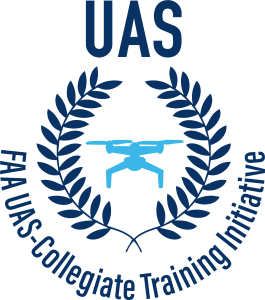The FAA's 2018 Reauthorization Act required the FAA to establish a collegiate training initiative program relating to unmanned aircraft systems (UAS). The Unmanned Aircraft Systems Collegiate Training Initiative (UAS-CTI) Program was launched in April 2020 and addresses the Section 631 requirement of the FAA 2018 Reauthorization Act.
Post-secondary institutions with UAS curriculums that want to be recognized as UAS-CTI participants now have the opportunity to apply for this distinction. The results of this collaborative working relationship will include a continuous dialogue with stakeholders to connect with colleges and universities with general industry, local governments, law enforcement, and regional economic development entities to address labor force needs.
Any public two-year institutions of higher education that participate in the UAS-CTI program will also be designated as members of the Consortium for Small Unmanned Aircraft System Technology Training. The FAA will invite members of this consortium to participate in annual meetings and other events with the agency, and we will facilitate the development sharing of best practices through this consortium.
To qualify for the UAS-CTI program you must be a not-for-profit, two- or four-year, post-secondary educational institution, institutionally accredited by an agency recognized by the U.S. Secretary of Education, and currently offer a Bachelors or Associates degree in UAS; or a degree with a minor, concentration, or certificate in UAS.
Read the UAS Collegiate Training Initiative Program.
View the UAS Collegiate Training Initiative Program Briefing Deck.
Requests for participation in the UAS-CTI program should be submitted to 9-FAA-UAS-CTI@faa.gov.
Please include the following: name of your school, point of contact, school type, accreditation, description of UAS degrees or certifications. The FAA will send qualified schools an initial questionnaire to establish eligibility for the program.
Participating institutions will engage with the FAA, other participants, general industry, local governments, law enforcement, and regional economic development entities to address labor force needs. This collaboration will ensure that UAS-CTI school graduates have the knowledge and skills needed to pursue a successful career in a UAS-related field.
Public two-year colleges that become a UAS-CTI school will be designated as members of the Consortium for Small Unmanned Aircraft Systems Technology Training. In addition, these new UAS-CTI Partners will support the FAA's efforts to expand the aviation workforce of the future while providing additional opportunities for Science Technology Engineering and Math (STEM) students.
In 2019 the Federal Aviation Administration (FAA) organized "National Drone Safety Awareness Week", which was annually until 2021. In 2021, the FAA evolved their approach with ONE Drone Safety Day – which is retuning for its seventh consecutive year on Saturday, April 26th!
Check out the Drone Safety Day site to learn more about the event, get involved in events happening in your local community, access event host resources and more.
What is the Youth Drone Initiative?
The Youth Drone Initiative was developed to foster collaboration and share safety information and best practices within the youth drone community. This initiative will establish connections with youth organizations to help advance drone aviation as a workforce pathway alongside traditional aviation careers.
Who can participate?
To participate in the Youth Drone Initiative, you must be a leader, coach or faculty of a school, organization or club that educates or assembles students from ages 11-18. Participants should have a drone program, offer courses on drones or planning to implement a program or courses. The FAA will host consortium meetings and other events, and distribute drone resources for continued success.
What are the benefits?
Participants in the Youth Drone Initiative will engage directly with the FAA, drone industry, local governments, schools, clubs and groups to cultivate this new drone community. This initiative will provide support and facilitate an open dialogue between youth programs, industry, and government agencies to share regulatory changes, successes, and solutions. In addition, participants will support the FAA's efforts to expand the aviation workforce of the future while providing opportunities in science, technology, engineering, arts, and math (STEAM) to students.
How to apply
To apply for the Youth Drone Initiative, send a message to 9-FAA-UAS-CTI@FAA.gov with your school, organization or club name and a brief description of your program.


Recognizing institutions that prepare students for careers in drones.
Interested in applying for participation in the UAS-CTI program?
© Copyright 2020 National Center for Autonomous Technologies. All Rights Reserved. This material is based in part upon work supported by the National Science Foundation (DUE 1902574). Any opinions, findings, and conclusions or recommendations expressed in this material are those of the author(s) and do not necessarily reflect the views of the National Science Foundation.

